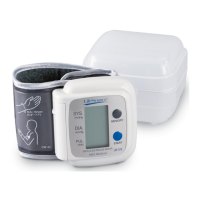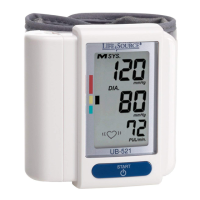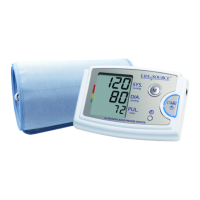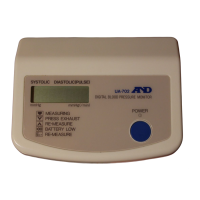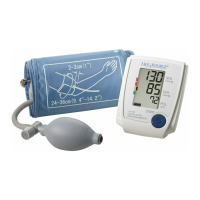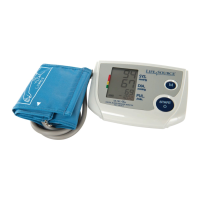E-10
LifeSource Health Line (Toll-Free): 1-888-726-9966
What Is Blood Pressure?
Blood pressure is the force exerted by blood against the walls of the
arteries. Systolic pressure occurs when the heart contracts; diastolic
pressure occurs when the heart expands. Blood pressure is measured
in millimeters of mercury (mmHg).
Assessing High Blood Pressure for Adults
The following standards for assessing high blood pressure (without
regard to age or gender) have been established as a guideline. Please
note that other risk factors (e.g. diabetes, obesity, smoking, etc.) need
to be taken into consideration and may affect these figures. Consult
with your physician for an accurate assessment.
Measurements for those whose systolic pressure
is over 150 mmHg
1. Fasten the cuff around your wrist. Raise your arm so that the
cuff is at the same level as your heart.
2. Press and hold the START button until a number about 30 to
40 mmHg higher than your expected systolic pressure appears.
3. When the desired number is reached, release the START
button. Measurement will begin.
SOURCE: The Seventh Report of the Joint National Committee on Prevention, Evaluation and
Treatment of High Blood Pressure for adults. National Heart, Lung and Blood Institute - May 2003.
ABOUT BLOOD PRESSURE
JNC7 Classification Table – for adults within the U.S
BP Classification
Normal
Prehypertension
Stage 1 Hypertension
Stage 2 Hypertension
Systolic (mmHg) Diastolic (mmHg)
less than 120 and less than 80
120-139 or 80-89
140-159 or 90-99
160 or 100
greater than
or equal to
greater than
or equal to

